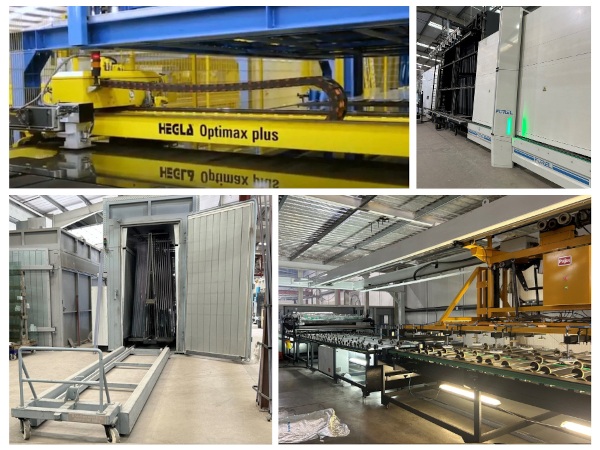Date: 17 April 2009
There, in the Dutch border city of Venlo, the company manufactures insulating glass on the latest, highly automated plants from Bystronic glass. .jpg)
In the light, roomy well designed hall, the Scheuten staff work on two insulating glass lines that are arranged in parallel. Further upstream on the production line, the glass storage, loading and cutting areas are located, which together take up about two thirds of the production area.
The initial concept for this modern plant was made as far back as 2006. At the time, Scheuten already manufactured laminated glass, single-lite safety glass, enamelled glass and coated glass in the largest possible dimensions; however, the insulating glass production facility had become outdated and also too small over the years. Next to the other glass producing plants of Scheuten, all of which are located in the same premises, a new production hall was to be built that needed to fulfil the exact requirements of the group of companies, regarding both size and equipment. "In early 2007, we therefore approached various machine builders with out request for an individually designed plant", Paul Heiligers, Operational Director at Scheuten Glas, reports..jpg)
An Individual Solution
Apart from the very specific technical specifications for the equipment for the new hall, Scheuten defined its requirements based on the needs of the customers and the conditions on the market. Paul Heiligers explains why it was eventually very easy for the decision-makers to make their choice: "Bystronic glass was the only supplier who knew how to design a plant that represents an individual solution tailor-made for us." In September 2007, Scheuten began with the construction of the hall, and in early January 2008, Bystronic glass delivered the first machine parts. At the time, the hall had neither doors nor windows, and only half of the floor had been finished. Completion of the hall and the erection of the machine therefore proceeded in parallel. "Thanks to the positive cooperation with Bystronic glass, we were able to perform the first test runs on the plant from as early as the beginning of April", Paul Heiligers recalls and adds: "Already then, it was clear to me that this would be a zero-fault plant with an extremely high output. .jpg)
Highly Automated Production
Today, the hall is a light-flooded but closed construction and offers a pleasant workplace for the staff, who work in a two-shift operation at the Scheuten plant in Venlo. The glass storage with two times 25 places is the starting point for production. Special glasses can be introduced via harp racks on the open hall side. The glass plates are therefore automatically conveyed onto the two insulating glass lines. The cutting area follows the loading area. Next to the float glass cutting plant SMFR with an edge deletion device, there are two LAMICUT cutting tables that effectively cut, break and separate the laminated safety glass up to a length of 4,700 millimetres. "In order to stay flexible in our production, we have opted for laminated safety glass tables that are also equipped with a float glass cutting tool", Paul Heiligers explains. Large laminated safety glass plates are processed to size in the adjacent hall. 
Very Flexible and Always Ready for Production
Cutting is performed not at a maximum speed, but at an optimal one and has been set to achieve the minimum possible cut of the residual plates. Large glass residues are automatically conveyed to the connected residual plate storage. An intermediate buffer is indispensable for arranging the glasses after cutting in the production sequence on the insulating glass lines. However, Scheuten explicitly requested that this should be as small as possible. "Bystronic glass knew exactly how to design a plant that is always ready for production, even without a large buffer area", Paul Heiligers says. Highly flexible mechanisms, which are controlled by software from the company Hanic, direct the glasses over intersecting tracks of the fully linked plant - from cutting to insulating glass production. Existing buffers can therefore be used intelligently. The particular requirement for the software in this respect related to the high complexity of the plant and the interdependency of all production stages. "As Bystronic glass involved us at an early stage in the planning, we could easily tackle this challenge", as Rainer M. Feuster, Managing Director at Hanic, looks back at the project phase. 
"More Than 100 Percent Satisfied"
In order to be able to implement its large product mixture, Scheuten works on two parallel insulating glass lines. The company produces square shaped units, which account for approximately two thirds of the products, on the right hand insulating glass line. The left line is mainly used for the production of model shapes and stepped units. The spacers can be processed on both sides in stainless steel or aluminium. In between the two top-modern lines, the attentive visitor will notice a relic from past times: an old insulating glass line from the Bystronic Lenhardt Technology Centre, which Scheuten uses today for the manual manufacture of small units. Paul Heiligers concludes: "All in all, we are more than 100 percent satisfied with the plants and the work of Bystronic glass".







Add new comment